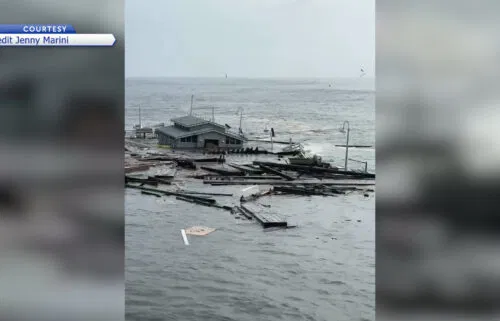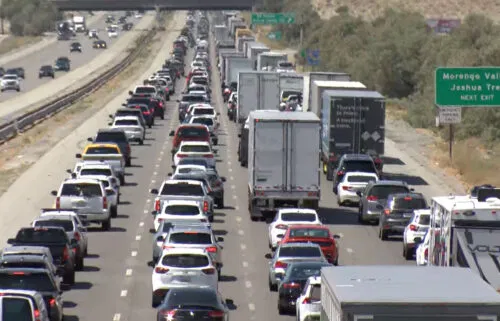Judge to weigh limits for aerial fire retardant in wildfires
MISSOULA, Mont. (AP) — A federal judge is weighing whether to severely limit the government’s use of aerial fire retardant to combat wildfires following arguments Monday by environmentalists who are concerned about water pollution.
A lawsuit pitting an environmental advocacy group against the U.S. Forest Service and others — including a Northern California town called Paradise, where a 2018 blaze killed 85 people — could reshape the way blazes are fought as this year’s fire season inches closer. Aircraft drops the potentially toxic red slurry in a bid to slow the blazes.
At Monday’s hearing in Missoula, Montana — home of the Forest Service’s famous smokejumpers, who parachute into remote fires — U.S. District Judge Dana Christensen said he planned to issue his ruling soon. He said he was cognizant of the potential for a blaze erupting while the case winds its way through the legal process.
“I’m envisioning fire season just around the corner somewhere in the western United States,” Christensen said.
Over the last two decades, wildfires across North America have grown bigger and more destructive. Experts say climate change, people moving into fire-prone areas, and overgrown forests are creating more catastrophic megafires that are harder to fight.
But the Forest Service Employees for Environmental Ethics, the advocacy group, argued Monday that by continuing to use retardant without taking adequate precautions to protect streams and rivers, the Forest Service is disregarding a federal clean water law.
The group has asked the court to issue an injunction blocking officials from using aerial retardant until they get a pollution permit — which Forest Service officials say could take years.
In the meantime, the agency says the retardant is a necessary firefighting tool and that the environmental damage from fires can exceed the pollution from the aerial retardant.
To limit pollution to streams, officials in recent years have avoided dropping the fire retardant inside buffer zones within 300 feet (92 meters) of waterways. Under a 2011 government decision, fire retardant may only be applied inside the zones, known as “avoidance areas,” when human life or public safety is threatened and retardant could help.
Still, more than 200 loads of retardant got into waterways over the past decade. Federal officials say those situations usually occurred by mistake and in less than 1% of the thousands of loads annually.



